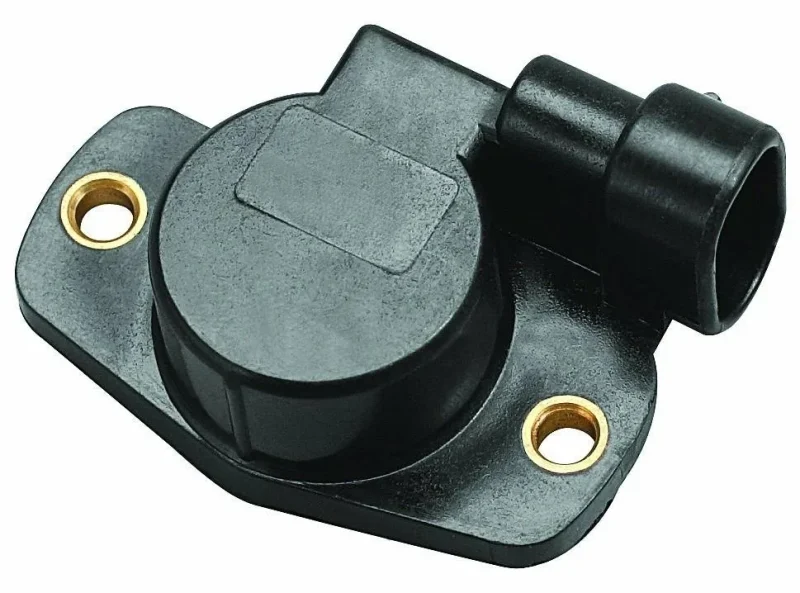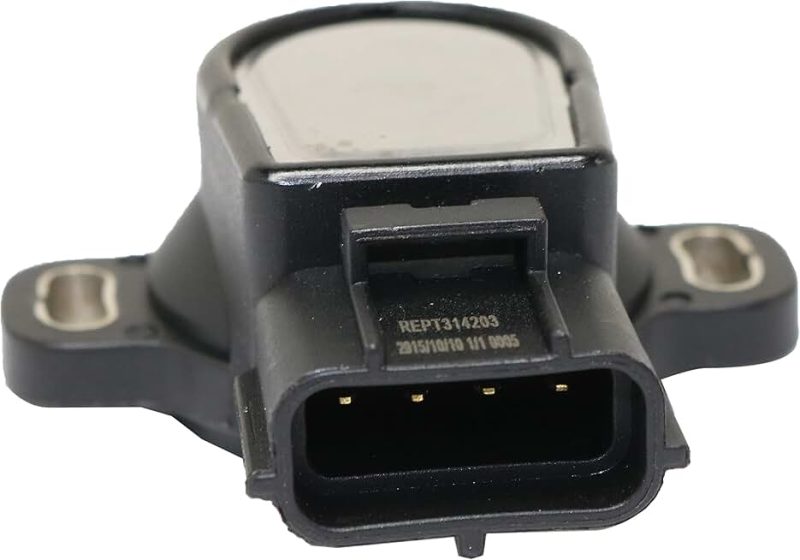What is a throttle position sensor? This abbreviation hides the throttle position sensor – an important element of the intake system of a modern internal combustion engine, which allows the electronics to accurately dose gasoline and regulate ignition. In this article, we will explain how the throttle position sensor works, describe its design, and find out what problems may arise with it.
How the engine throttle sensor works
The task of the throttle position sensor is to transmit to the electronic engine control unit (ECU) data about how open the throttle is on the inlet. Based on this data, the computer not only understands how intensively the driver wants to accelerate, but also calculates the necessary parameters for this – the amount of fuel or the correction of the ignition advance angle.
In vehicles with fuel injection, the sensor is mounted directly on the damper housing. By pressing and releasing the accelerator pedal, the driver changes the throttle opening angle (opens or closes the air supply) and this sensor reads it. The sensor’s algorithm is simple. It is supplied with 12 volts of on-board voltage, and depending on the throttle position it produces a different voltage value (approximately from 0.4 to 5 V).
When idling, when the choke is closed, the voltage is minimal – usually no more than 0.7 volts. As the throttle is pressed, it increases. The throttle axis turns the sensor slider to a certain angle. Opening the choke causes the output voltage to rise. With the pedal “at the floor” the sensor produces a maximum of 5 volts.
Design and types of RPMs
The principle of operation of all DPDZs is typical, but the executive part may differ. Sensors are available in two versions: film-resistor (resistive) and non-contact. The former are based on a variable resistance resistor (potentiometer) controlled by a movable contact connected to the damper axis. Sensors of the second type work using the Hall effect, in which the current in the conductor changes under the influence of a magnetic field. In them, a specially shaped permanent magnet rotates the throttle axis. Such sensors are much more reliable, but also cost more than simpler contact models.
The main source of problems in a film-resistive type sensor is mechanical contact. The slider, which moves along the resistive tracks and changes the resistance of the sensor, gradually wears itself out and rubs the delicate coating of the resistor. And at some point the contact is lost or becomes unstable. The first is easier to determine: the current on the ECU from the sensor simply does not come. In the second case, the computer receives a jumping signal, in most cases incorrect, which also makes the engine unstable.

The second, more advanced type of throttle position sensors is devoid of mechanical contact and works on the basis of changes in the magnetic field. Therefore, there is essentially nothing to break in the sensor itself. Most often, problems with it are related to the wiring and connection block.
Troubleshooting the throttle sensor
In general, the throttle sensor is a reliable and quite durable node, so it breaks less often than other components of the intake. There are no ways to prevent breakdowns, since it is not possible to minimize the wear of the sensor of the contact type. The resource of the contactless DPDZ is higher, but its failure cannot be excluded.
Repair of choke sensors is not economically feasible: it is easier and cheaper to buy a new one. And the malfunction of the DPDZ can be suspected by a number of symptoms that can appear both together and separately. However, the diagnostic problem is that each of these symptoms can indicate different faults related to the engine, fuel supply or electrical equipment. Therefore, finding the true culprit of the problems requires skill and time.
Main symptoms of a malfunctioning DPD:
- idle speed is unstable;
- engine stalls at idle or while shifting gears;
- is a dip or jerk in the engine, for example, when gaining speed;
- deteriorates the dynamics of the car;
- the Check Engine warning light illuminates on the dashboard;
- may increase fuel consumption;
- when scanning the diagnostic device shows error P0120 or other error related to the throttle position sensor.
The listed symptoms, as already mentioned, can also indicate malfunctions of other engine units. But experts in such cases recommend to start diagnostics with DPDZ, the throttle plate itself, as well as checking the condition of the Hall sensor.
You can check the sensor operation with a multimeter. It is not difficult, it has only a few contacts – “mass”, input (12 V) and output (0.4-5 V). First of all, it is worth checking the wiring – after all, the DPZD works only when voltage is applied to it. Does the sensor receive power (12 V), does it produce at least some voltage at the output under load, and, in general, is there “mass” on the corresponding contact? If there is, then you need to open the choke, watching the voltage at the output. The signal from the DPDZ should be even, without jumps and “sticking”.

In some cases, a quick repair is possible: it may be enough to clean oxidized terminals or eliminate breaks in the wiring. A “stuck” power relay will require replacement with a similar element.
Computer diagnostics makes it possible to obtain error codes, by which the specialist can accurately determine the malfunction. They are standardized for cars of many brands.
The most common error code, indicating malfunction with the throttle sensor, is P0120 (malfunction of the throttle position sensor circuit). In addition to it, codes Р0121-Р0123, Р0220-Р0223, and on some models – and Р2135 can be displayed.
Diagnosis, obtained with the help of a scanner, after checking the external contacts will be the final argument in favor of replacing the DPDZ with a new one.
Summarized results
- Throttle position sensor – a device that transmits in real time to the engine ECU data on the angle of rotation of the throttle valve.
- The correct operation of the throttle position sensor directly depends on the smooth operation of the engine in the entire range of revolutions.
- DPDZ are of two types: film-resistor (resistive) with a mechanical contact group and non-contact (magnetic). The second type of sensors is more durable.
- The main symptoms of failure of the DPDZ – unstable engine operation, loss of power and increased fuel consumption.
- Before replacing the sensor, it is worth making sure that its wiring and contact group are in good working order.
